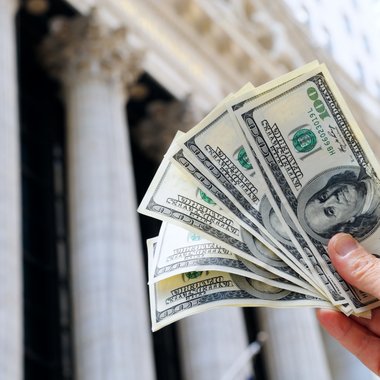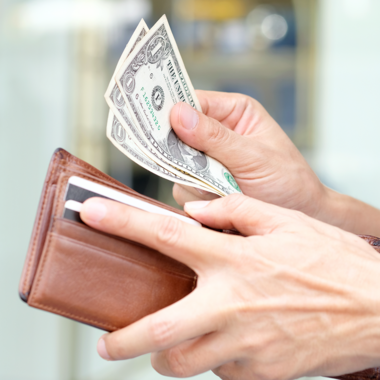A completely cash-free society is a myth. Here's why.
Oct 14, 2021The media has proclaimed that cash usage is in a downward spiral for at least a decade. But while it's true that more people are using contactless and other digital forms of payment than ever before, the claim that we don't need cash anymore is misguided. If anything, now that the COVID-19 pandemic has sped up digitalisation, understanding the importance of cash is even more relevant and critical if we want to live in a healthy and inclusive society.

Deconstructing the cashless myth
Of course, there is no denying that data shows the growth of contactless payments and the effect that is having on cash.
For example, in the UK, which has one of the highest rates of contactless adoption anywhere in the world, customers paid cash only 23% of the time in 2019 — down from 48% in 2014. That trend is ubiquitous: in 2019 cashless payments were more commonplace than the year prior in every single region on Earth.
The COVID-19 pandemic also accelerated this trend. The fear that touching notes and coins would create more opportunities for the virus to spread caused a perfect storm, with customers using cash less frequently and, at the same time, merchants stopped accepting cash and governments started implementing measures to encourage more cashless payments, like raising contactless limits.
As a result, cashless payments exploded. But it is clearly not as simple as saying that this means cashless societies are likely, or even feasible.
The grass isn't always greener
While there's no point denying that cash payments have declined, it doesn't follow that cash is inevitably headed towards obsolescence. Mass adoption of new technology (the roll out of contactless payments is very new in many regions) will always be reflected in data, but it doesn’t necessarily equate to complete replacement of traditional methods especially when there are positives and negatives of both methods.
While some of us are already leading a mostly cashless life, there are people for whom this isn't possible — low-wage earners, the elderly, the un(der)banked, and other vulnerable groups. Ditching cash once and for all means these people will get cut off from the mainstream economy.
Others prefer cash because its finite nature helps to control their finances, especially online. And this extends beyond their own spending; for example, parents still give their children cash as pocket money even when they want to make purchases online. Online gaming is an area where this is particularly relevant, as we have all read stories of parents that have discovered shocking bank or credit card statements as a result of letting their children make in-game purchases using credit or debit cards.
There are also consumers that are growing increasingly suspicious of how data related to them is being collected and stored by some corporations. In some circumstances, this is leading them to interacting with companies in a way that doesn’t generate a data trail, and in payment terms this means using cash.
And even where people are choosing contactless and other digital payment methods over cash, it doesn't mean they're happy for that choice to be taken away.
If anything, research suggests the opposite. A YouGov study, for instance, has found that, the more cashless a society is, the more likely people are to view being completely cashless as a negative.
Sweden: a cautionary tale
Needless to say, the risk that cashless will cause financial exclusion is greatest in countries with large numbers of un(der)banked people.
In India, where 190 million people don't have bank accounts despite the government's decades-long drive to improve access, policies aimed at promoting cashless payments have caused significant hardship.
When 86% of the country's cash was taken out of circulation, for instance, tens of thousands of farmers became unable to buy seeds for their crops overnight. And low-wage earners had to choose between a day's work and queuing at the bank to exchange what cash they had.
But the risks of going cashless are all too real even in developed countries with high levels of equality and financial inclusion.
Consider Sweden.
The country is often used as a shining example of the benefits of a cashless society. But the government has recently had to intervene to slow things down, including enacting a law obliging banks to keep offering cash services, because vulnerable people were being left behind.
Similarly, people in rural areas, where cash still dominates, were being forced to travel 20 km or more even in harsh weather to get to an ATM or branch where they could deposit their cash.
Access and inclusion aside, a cashless society also has other serious risks.
Sweden's central bank has warned that a cashless society 'will likely lead to the general public no longer having access to state-issued money....' This will put power in private actors' hands and risks destabilising the financial system.
More worryingly, cashless payments depend on technology. And technology works well until it doesn't.
As the Swedish Civil Contingencies Agency notes, if a man-made or natural disaster were to cause a power failure or damage the country's broadband network, it would make cashless payments impossible and paralyse the economy.
Cash is the safety net
There's no stopping digitalisation. Over the next few years, it'll continue at a rapid pace and make cashless payments even more commonplace than they already are.
But the pace of digitalisation is still vastly outstripping the shift away from cash, and there is no reason to believe we will reach a point where everyone is ready for digital-only payments. And, in any case, ultimately cash gives people more choice.
It allows them to transact privately and offers a fall-back option when other payment methods fail.
So accepting cash payments — whether physical or digital — ensures merchants can cater to the widest market possible. And that everyone can keep participating in the economy moving forward, regardless of their status, tech know-how, or ability to access technology and the traditional financial system.


